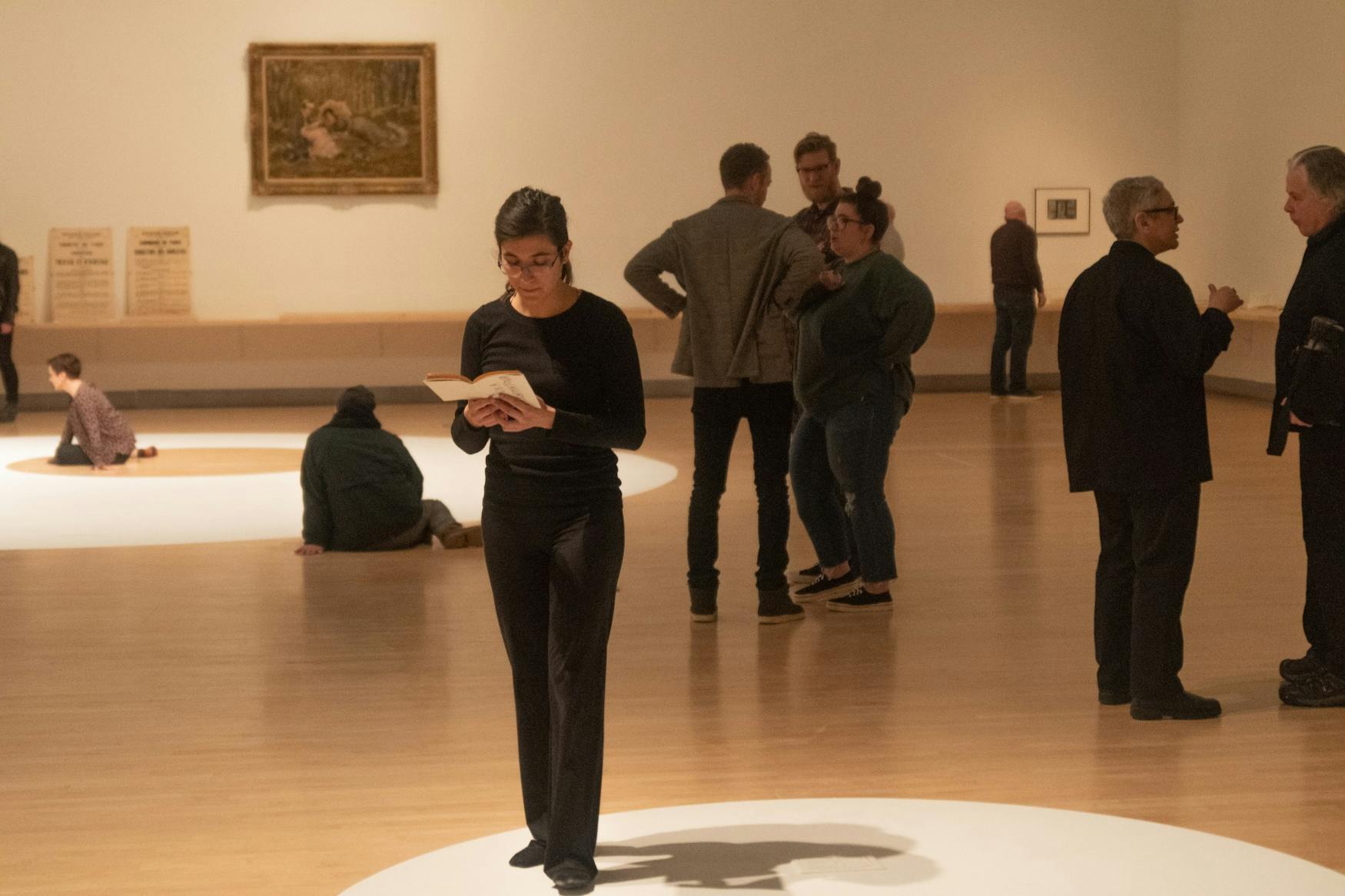Today is for ‘Yesterday’s Tomorrow’
On Feb. 13, the Rose Art Museum hosted its opening ceremony for the Rose’s Spring Exhibition. In the Gerald S. and Sandra Fineberg Gallery and Lower Rose, “Yesterday’s Tomorrow” presents a selection from the Rose Museum from 1933 to 2018. The chosen pieces focus on historical incidents that had long-lasting impacts on our present understanding of society and that continues to shape our future. In the Lois Foster Gallery, “Dora García: Love with Obstacles” includes a variety of art forms, from film and drawings to documents and performances created by Dora García. The exhibition aims to tackle the relationship between idealism, reality and the difficulties of bringing the former to the latter.

WIDE VARIETY: “Yesterday’s Tomorrow” presents artworks from the museum collection spanning from 1938 to 2018.
Entering the museum, one cannot help but notice the scroll-like construct on the left side at the end of the room. “Project for a New American Century” is a 65-foot-long, six-foot-tall paper loop that is covered in words and drawings. One part of the sculpture curves in on itself so that one can walk inside and be completely surrounded by it. The text and graphics on the paper wall covers international affairs from the end of World War II until post-9/11. The mixture of names, numbers and sentences is delicately inserted in the background of drawings of splendid figures that carved their names in history. Starting and ending the scroll with the atomic bombing of Hiroshima and Nagasaki seems to suggest a cycle that will never break if we fail to learn lessons from the past.
Moving to the Lower Rose, a relatively small piece caught my eye. “(Geometries) Fire X” is a TIME Magazine cover with sacred Islamic geometrical cut-outs. While one can still read the front line of the magazine, which is clearly related to a report on warfare, one cannot help but be distracted by the cut-out, which feels like looking through a kaleidoscope. Who’s to say it is not how we feel about news today? More and more often, we read news under layers of cover and sculpting. The pieces that were cut out might very well be their own story, but we shall never see the whole story.

APPRECIATING ART: The Rose Art Museum opened this gallery for the spring semester.
A corner of the lower chamber is set up as a small screening room, where Dora García’s documentary, “Love and Obstacles, 2020,” is shown. The film focuses on Alexandra Kollontai, a Russian feminist and activist before and during the early stage of the Soviet Union. In the film, letters and fiction of Kollontai were read, with the images of the posters of her lectures and the architecture featured on the screen. A hopeful future for Russian women can be read through the lines of her thoughts, which sharply contrasts the reality of Russia in the footage. A short fiction called “Soon (In 48 Years’ Time)” imagines a commune in the 1970s with no poverty and pain. At the same time, the aged architecture in a Russian city looks like someone’s faded memory.
On the other side of the chamber, several collections of documents are displayed around the room, including letters between Hannah Arendt and Martin Heidegger, two great German philosophers of the 20th century, who shared an intimate relationship for over five decades. After World War II, scholars were divided on their stand on Heidegger, who was known as one of the most influential philosophers in the 20th century and a follower of the Nazi ideology. Should we separate intellect from moral imperfection? By resuming her correspondence with Heidegger, Arendt chose the path of reconciliation, hence the title of the collection. Like what she wrote in her diary, reconciliation “is thus the exact opposite of forgiveness, which generates inequality. The burden of injustice is for he who has committed it, that which he has laden on his shoulders.” The choice of reconciliation demands courage in one’s own decision, which allows her to break through the identities of Heidegger and talk directly to the person himself.
These are just some of the pieces that caught my eye upon my first visit. If any of these comments interest you in one of the specific pieces or the museum in general, pay a visit to this fine establishment.



Please note All comments are eligible for publication in The Justice.